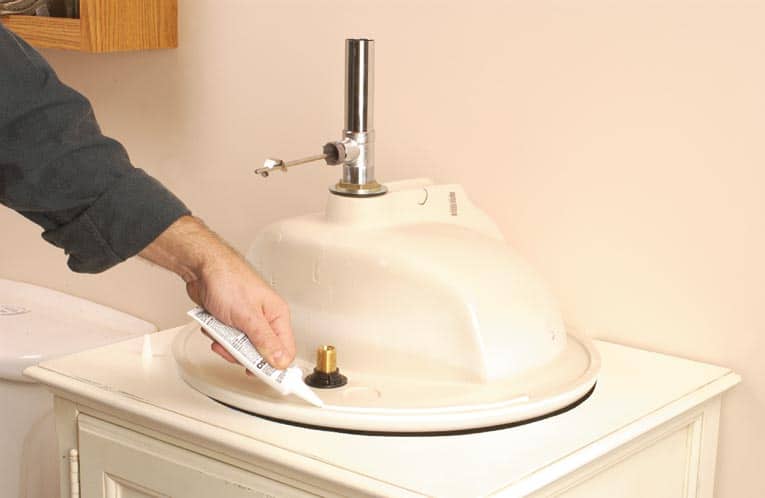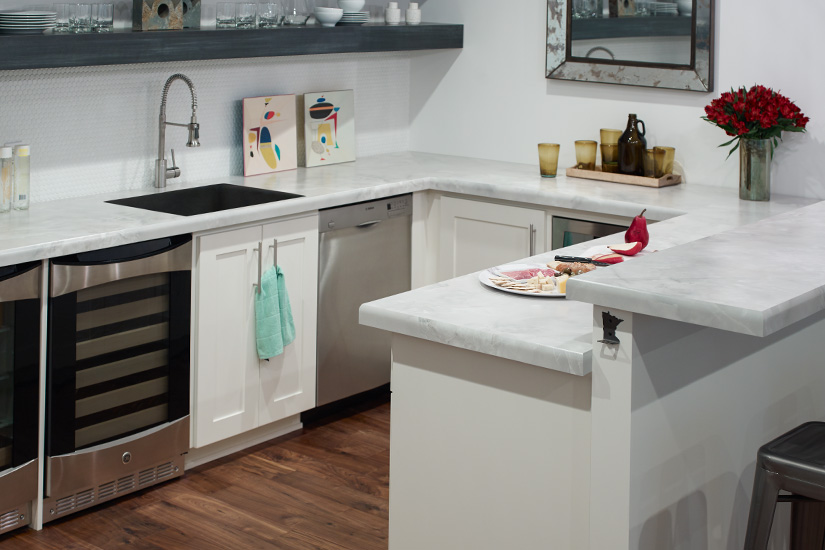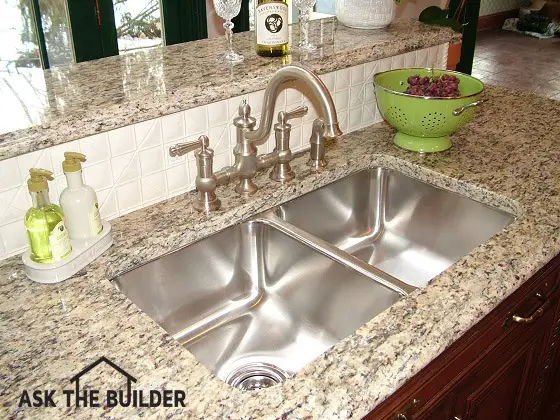This time around, we shall cover What Adhesive Do You Use For Undermount Sink. Obviously, there is a great deal of information on How to Install an Undermount Sink on the Internet. The rapid rise of social media facilitates our ability to acquire knowledge.
information about Silicone Adhesive For Undermount Sink is also related to What Is The Best Adhesive For Undermount Sink To Granite and Silicone Adhesive For Undermount Sink. As for further searchable items pertaining to Can you put an undermount sink on laminate?, they will likewise have anything to do with What Is The Best Adhesive For Undermount Sink To Granite.

19 Unexpected Facts About What Adhesive Do You Use For Undermount Sink | 6 Things You Need to Know About Undermount Kitchen Sinks
- One of the things I really, really, really wanted in our new kitchen was an undermount sink. I was so tired of crud getting stuck against the ridge of the sink. I longed for the day when I could just wipe crumbs off the counter straight into the sink with no obstructions! (Okay, maybe I’m being a little dramatic, but you get the idea). - Source: Internet
- Most undermount sink manufacturers recommend that you use pure, 100-percent silicone sealant for undermount sink installation. Silicone sealants are designed for resilient flexibility and have good adhesive properties. If an ordinary caulk was used to seal the sink, it likely will fail quickly. - Source: Internet
- An undermount sink should be attached to the countertop before it’s installed on the base cabinets. It’s awkward to do it otherwise—there’s typically not enough space inside the sink base cabinet to do what you need to do. If for some reason you need to install the sink with the top in place—or reset an existing undermount sink that has separated from the underside of the counter— you’re probably going to have to cut the cabinet sides to gain access to clip fittings that secure the sink against the underside of the counter. Installing the faucet will be a pain, too. - Source: Internet
- Most undermount sinks come with clips to attach them to the underside of your countertop. However, you don’t have to use clips for all undermount kitchen or bathroom sink installations. You can also use brackets or the two-part epoxy. You can also use a combination of attachment methods for a more secure hold. - Source: Internet
- Professional installation is often recommended for a precise finish. If you do decide to try your hand at it, have a helper handy. Here are the steps for installing an undermount sink: - Source: Internet
- Some installers prefer to mount the sink working with the countertop right-side up. Doing so gives you a better view of the fit and look of the reveals during the final stages as the sink clips are tightened to retain the sink rim on the underside of the counter. It’s also what you have to do if you’re trying to re-install an existing undermount sink that’s delaminated and falling away from the countertop. - Source: Internet
- Place the all-thread rod in place with wood blocks and tighten it until you see adhesive squeezing out all around. Even though you won’t be able to see it, you will want to apply enough adhesive so it squeezes in around the inside as well. Do not over tighten as this will “starve” and weaken the seam. Allow the squeeze-out to harden for about 30 minutes or until it is hard to the touch. - Source: Internet
- When we decided to go with laminate countertops for our kitchen, I thought my wish for an undermount sink was impossible. Because the MDF under laminate countertops gets ruined when it gets wet, you can’t install a normal undermount sink. Water gets in there, swells the MDF and warps your countertops. - Source: Internet
- Use construction adhesive to glue the sink clip studs in place. Follow instructions for drying time. Using a caulk gun, apply a thick bead of silicone caulk to the countertop along the inner edge of the outline. Place the sink down and clip it to the countertop by twisting the wingnuts that come with the clips. - Source: Internet
- The first step to installing a solid surface undermount sink is to turn the solid surface sheet upside down and locate the place where the sink is to be placed. Then, position the bowl on the surface and use hot melt glue to fasten positioning blocks around the sink to aid in alignment during gluing. Drill a 1-1/4” hole in the top, in-line with the sinkhole, so that you can insert an all-thread rod. The rod, along with nuts and wood blocks (that act like large washers), are used to place a moderate and even amount of pressure on the sink for gluing. (See Figure 10) - Source: Internet
- If the rim of the sink is not perfectly true (flat), then use the adhesive color that is recommended by the manufacturer for the sink. That way, the uneven sink rim will not show, since the adhesive which matches the sink will effectively “disappear” from view. In essence, the adhesive will create a self-leveling effect. The only line that will show will be where the sink matching adhesive meets the underside of the flat countertop, making the glue line appear flat. - Source: Internet
- Look for a sink that’s approved for use as a laminate undermount. Don’t try to choose any old sink and “make it work.” - Source: Internet
- The goal, when gluing a sink in place, is to have the glue line appear perfectly flat. In almost all instances the countertop is true (flat). In these cases, where the rim of the sink is perfectly true, then the glue line will be flat and you can use the adhesive color recommended by the manufacturer for the countertop or the sink. - Source: Internet
- There is no room for error and needs to be is tight as possible allowing the narrow rim as much support underneath as possible. Undermounts are missing a mounting rail and brackets to hold it from shifting. If you’ve got 1″ or more of counter under the lip of the sink, you can embed it in waterproof adhesive-caulk. - Source: Internet
- The secret to moisture resistance is the adhesive. Karran uses methyl methacrylate, two-part, permanent set acrylic injected between the sides of the sink and the counter. The glue forms a virtually unbreakable bond that holds the sink in place and makes it impossible for water to penetrate to the particle board. - Source: Internet
- This can seem simple enough, however, it is often difficult to find adhesive that matches a sink. Therefore, make sure you sand the sink rim true. Once it is true, then the adhesive matching the countertop can be used. If you do not sand the sink rim flat and go ahead and use the countertop matching adhesive, then an uneven appearing junction between the sink and top can occur. - Source: Internet
- Beyond aesthetics, there are functional benefits to having a solid surface undermount sink, versus a top mounted (or drop-in sink.) Undermount sinks are easier to clean and keep hygienic since the barrier around the sink, like the lip for a top mounted sink, is no longer there. Additionally, the seam between the sink and the top is bacteria, stain and water resistant because it is a hardened resin like the rest of the non-porous sink and countertop. - Source: Internet
- But I did what I do for every single DIY project, and started combing the internet like an obsessed crazy woman. And that’s how I found out about Karran sinks. They are specially constructed to be undermounted with laminate! Who knew, right? - Source: Internet
- Your choice of a reveal style should be based mostly on your visual preference. Most fabricators I know prefer the zero reveal style—arguing that it’s the cleanest. Some experts say that a positive reveal just gives you another narrow, hard-to-clean surface around your sink (and believe me, it’ll get dirty as you become accustomed to sponging messes from the countertop right into your undermount sink). A negative reveal also produces a hard-to-clean surface on the counter underside where dirt, grease and germs are likely to build up unseen. - Source: Internet
 To begin started, here are some tips for finding information about Strongest Adhesive For Undermount Sink:
- Research Silicone Adhesive For Undermount Sink-related information from credible sources. This includes libraries, websites, and even journalistic professionals.
- When researching Ask MetaFilter, it is vital to be aware of the numerous sorts of electronic media sources, such as Google and YouTube. Social media platforms, such as Facebook and Twitter, are also likely to contain information regarding Silicone Adhesive For Undermount Sink.
To begin started, here are some tips for finding information about Strongest Adhesive For Undermount Sink:
- Research Silicone Adhesive For Undermount Sink-related information from credible sources. This includes libraries, websites, and even journalistic professionals.
- When researching Ask MetaFilter, it is vital to be aware of the numerous sorts of electronic media sources, such as Google and YouTube. Social media platforms, such as Facebook and Twitter, are also likely to contain information regarding Silicone Adhesive For Undermount Sink.Video | What Adhesive Do You Use For Undermount Sink
To obtain the most accurate information about Adhesive For Undermount Sink To Marble, it is essential to investigate the credibility of each source by reading.
This article contains multiple what adhesive do you use for undermount sink-related films from a variety of sources, which will expand your understanding about How to Install an Undermount Sink. Internet is an excellent resource for getting information on a range of subjects.
## Here are some crucial points concerning Adhesive For Undermount Sink To Marble:- What Adhesive Do You Use For Undermount Sink
- What Glue Do You Use For Undermount Sink
- What Adhesive Should I Use For Undermount Sink
- What Kind Of Glue Do You Use For Undermount Sink
- What Adhesive Do You Use To Mount An Undermount Sink

With so many websites and forums giving Ask MetaFilter-related information, it is not difficult to locate what you require.
This is a highly unconventional method for obtaining knowledge about 5 Best Adhesive for Bathroom Sink (Helpful Tips), compared to what most people are accustomed to. It permits a more in-depth examination of the content and application of information regarding Sink Adhesive.
 Methods for creating aesthetically pleasing and informative displays of What Is The Best Adhesive For Undermount Sink To Granite information. They can be utilized in business and marketing environments to convey messages regarding 5 Best Adhesive for Bathroom Sink (Helpful Tips). Consequently, we additionally supply photographs regarding Ask MetaFilter.
Methods for creating aesthetically pleasing and informative displays of What Is The Best Adhesive For Undermount Sink To Granite information. They can be utilized in business and marketing environments to convey messages regarding 5 Best Adhesive for Bathroom Sink (Helpful Tips). Consequently, we additionally supply photographs regarding Ask MetaFilter.
This article concludes by providing an overview of what adhesive should i use for undermount sink. In addition, How To Glue Undermount Sink and Silicone Adhesive For Sink are discussed to compare your understanding of How to install undermount sink without clips in 2022.